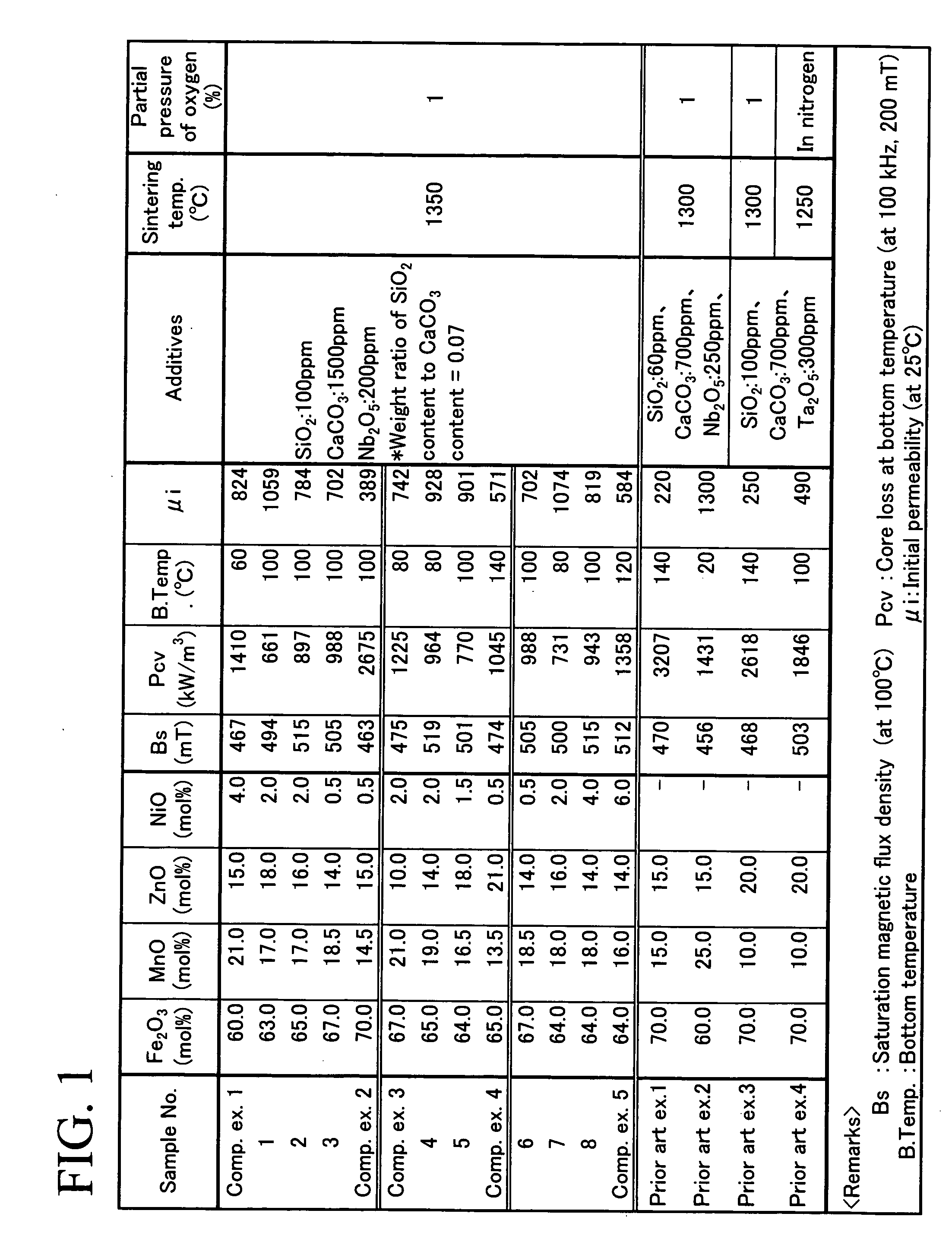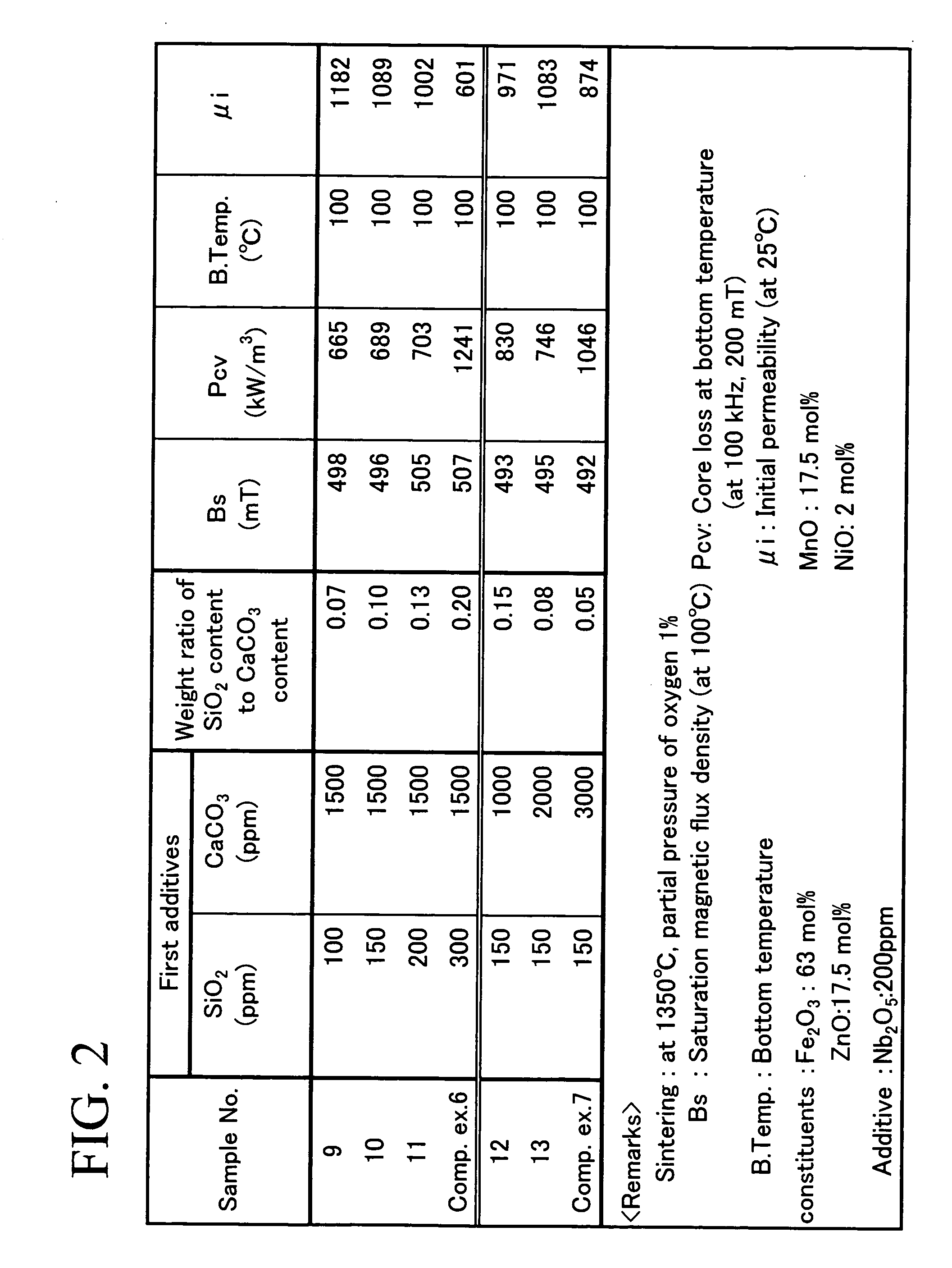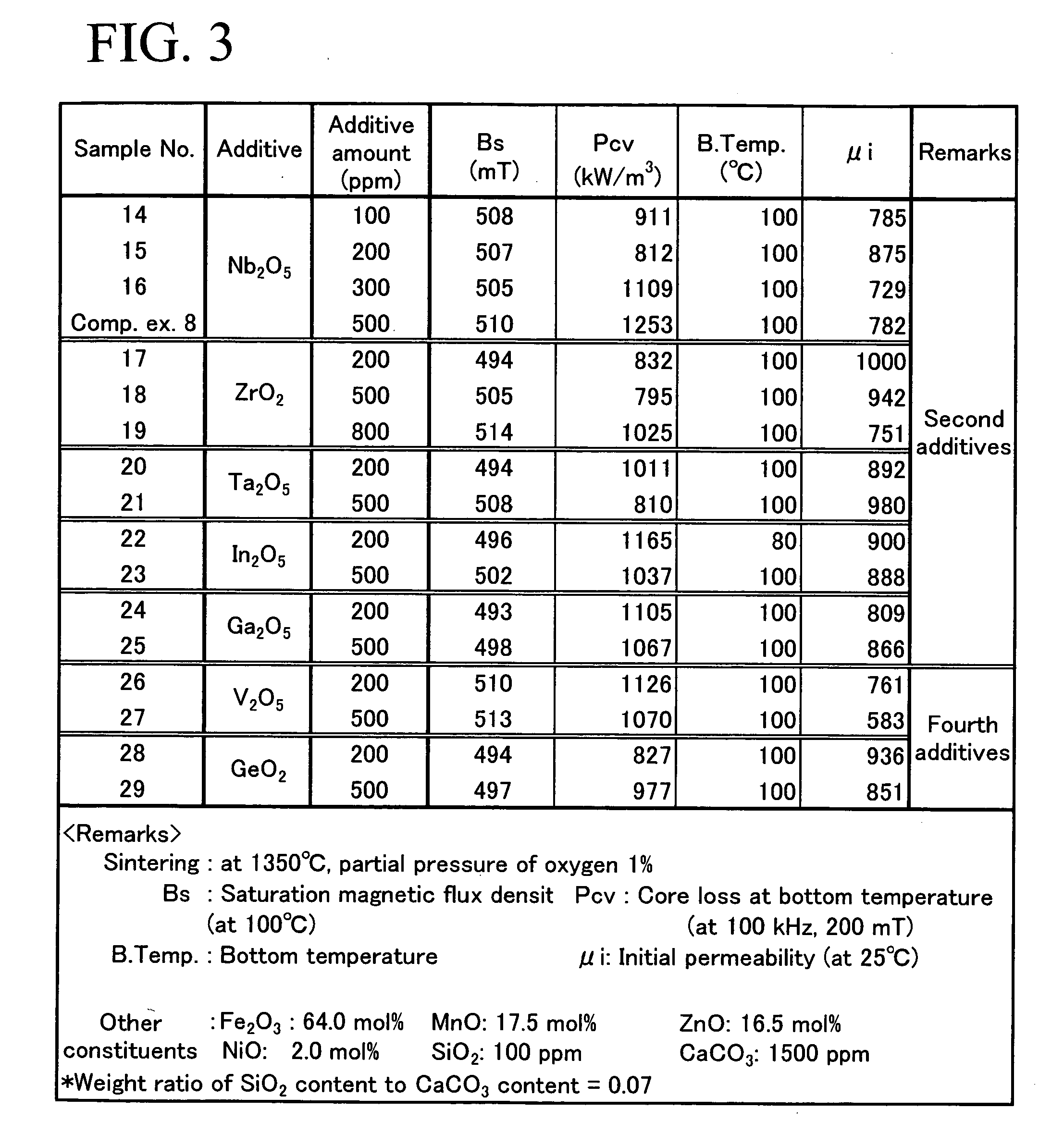Ferrite material
a technology of ferrite and material, applied in the field of ferrite material, can solve the problems of poor rustproof property, high price, and high loss of soft magnetic metal materials, and achieve the effects of reducing and improving the saturation magnetic flux density
- Summary
- Abstract
- Description
- Claims
- Application Information
AI Technical Summary
Benefits of technology
Problems solved by technology
Method used
Image
Examples
example 1
[0076] An experiment carried out for checking the preferable composition of the Mn—Zn—Ni based ferrite is described as Example 1.
[0077] The ferrite cores having the compositions shown in FIG. 1 were prepared.
[0078] As the raw materials used as main constituents, a Fe2O3 powder, a MnO powder, a ZnO powder and a NiO powder were used. These powders were subjected to wet mixing, and then the mixtures were calcined at 900° C. for 2 hours.
[0079] Then, the calcined substances of the raw materials used as main constituents and the raw materials used as additives were mixed together. As the raw materials used as additives, there were used a SiO2 powder, a CaCO3 powder, and a Nb2O5 powder. The raw materials used as additives were added to the calcined substances of the main constituent raw materials, and mixing was conducted while conducting milling. The milling was carried out to have a mean particle size of approximately 1.5 μm. A binder was added to each of the obtained mixtures, and th...
example 2
[0089] An experiment carried out for checking the preferable additive amounts of the first additives in the Mn—Zn—Ni based ferrite is described as Example 2.
[0090] The ferrite cores having the compositions shown in FIG. 2 were prepared through the same steps as in Example 1. Additionally, the magnetic properties and the like were measured under the same conditions as in Example 1. The results obtained are also shown in FIG. 2.
[0091] As shown in FIG. 2, it is found that the addition of Si and Ca as first additives can reduce the core loss (Pcv). However, in the case of Si, when the additive amount thereof reaches 300 ppm in terms of SiO2, the core loss increases. On the other hand, in the case of Ca, when the additive amount thereof reaches 3000 ppm in terms of CaCO3, the core loss increases.
example 3
[0092] An experiment carried out for checking the variations of the magnetic properties and the like accompanying the addition of the second additives or the fourth additives in the Mn—Zn—Ni based ferrite is described as Example 3.
[0093] The ferrite cores having the compositions shown in FIG. 3 were prepared through the same steps as in Example 1. Additionally, magnetic properties and the like were measured under the same conditions as in Example 1. The results obtained are also shown in FIG. 3.
[0094] As shown in FIG. 3, it is found that addition of either the second additives (Nb2O5, ZrO2, Ta2O5, In2O5, and Ga2O5) or the fourth additives (V2O5 and GeO2) yields the core losses (Pcv) of 1200 kW / m3 or less while the saturation magnetic flux densities (Bs) in the vicinity of 500 mT are being maintained. Nb2O5, ZrO2, and Ta2O5 of the second additives and GeO2 of the fourth additives have large effect in reducing the core loss. As for Nb2O5, the addition thereof exceeding 400 ppm in co...
PUM
| Property | Measurement | Unit |
|---|---|---|
| magnetic field | aaaaa | aaaaa |
| core loss | aaaaa | aaaaa |
| magnetic field | aaaaa | aaaaa |
Abstract
Description
Claims
Application Information
 Login to View More
Login to View More - R&D
- Intellectual Property
- Life Sciences
- Materials
- Tech Scout
- Unparalleled Data Quality
- Higher Quality Content
- 60% Fewer Hallucinations
Browse by: Latest US Patents, China's latest patents, Technical Efficacy Thesaurus, Application Domain, Technology Topic, Popular Technical Reports.
© 2025 PatSnap. All rights reserved.Legal|Privacy policy|Modern Slavery Act Transparency Statement|Sitemap|About US| Contact US: help@patsnap.com



